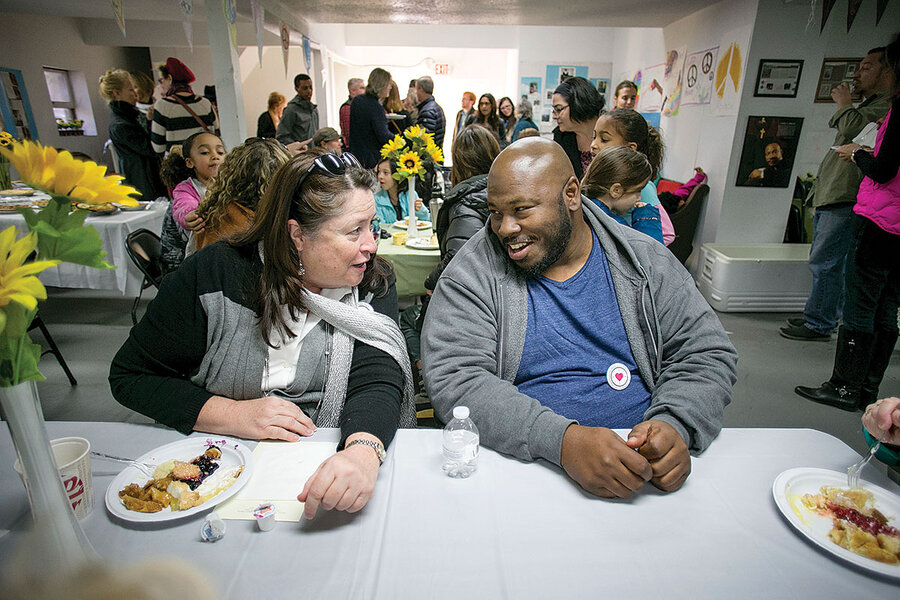Reconciliation’s process and promise
Loading...
For Jessica Tilson, healing began with a jar of dirt. Her ancestors were slaves sold by the Jesuits who ran Georgetown University in 1838, and today she looks at the Louisiana cemetery where many of their bodies are buried and sees a full circle in that symbolic vessel.
Not long ago, she placed it on a table in front of Jesuits who came to Louisiana seeking reconciliation, and said: “Give our ancestors a proper burial.”
The stories by Stacy Teicher Khadaroo in Louisiana and Fred Weir in Russia in this week’s issue are about the search for reconciliation. They are about injustice and inhumanity on two different continents and on a scale unthinkable.
In the United States, no one alive witnessed slavery as an institution; in Russia, there are fewer and fewer alive who witnessed Joseph Stalin’s gulags. Both stories are increasingly wreathed in history and seen through the lens of a different time. But in their articles, Stacy and Fred offer a different perspective: that the past remains present until overcome.
Time makes events remote, but thoughts and feelings can persist like the gravitational waves that scientists suspect have been rippling through the cosmos since the big bang. Time, in and of itself, is not a solution. It does not always dissolve emotions; it can also harden them.
Afghanistan has not come to grips with the tribal suspicions unleashed by its civil war nearly three decades ago. The Middle East is still fundamentally divided by a religious dispute more than 1,300 years old.
How do people and nations prevent traumatic events in their past from becoming fault lines that perpetuate grievance, anger, and willful misunderstanding?
The journal Ethics & International Affairs proposed an eight-step process back in 1999. Consider it a self-help guide for countries and continents. It involves truth, accountability, punishment, the rule of law, compensation to victims, and institutional reform, among other things.
In recent years, the model for success has been South Africa. Its progress came from the fact that the process was communal and uncomfortable. It was televised, and it did not shrink from laying blame on either side, where warranted. Most important, perhaps, was the transcendent leadership of President Nelson Mandela and Archbishop Desmond Tutu, who guided the reconciliation process.
Today, that spirit seems to be in eclipse.
“Many political leaders play the race card and whip up emotions around race – in direct contrast to a spirit of unity and reconciliation,” wrote the chairman of the FW de Klerk Foundation in 2015.
Reconciliation cannot be achieved with a single act. Its debts can’t be paid only once or by one set of people, however great. Reconciliation is the perpetual recognition that the work of overcoming the past and prejudice can never be laid aside, and that only through this refining struggle is our common humanity seen and cherished.
In that way, Jessica Tilson’s jar of dirt is not an endpoint. It is a promise.








